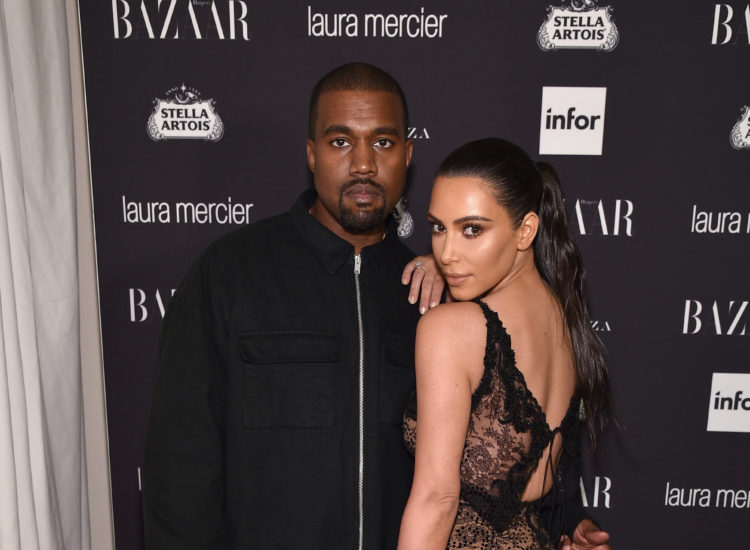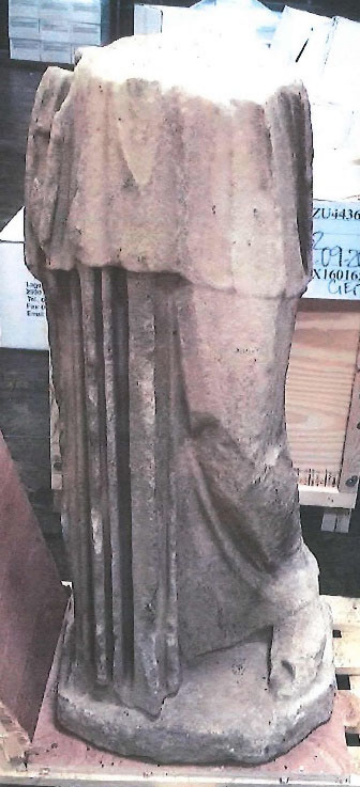Law & Politics
It May Have Been Kanye West—Not Kim Kardashian—Who Bought an Allegedly Looted Ancient Roman Sculpture From Italy
Kardashian says she's never even seen the centuries-old sculpture.

Kardashian says she's never even seen the centuries-old sculpture.

Taylor Dafoe

Last month, the U.S. government demanded that Kim Kardashian forfeit an ancient Roman sculpture that she had been in the process of acquiring, according to papers in a civil court action. But now, it seems that perhaps the Keeping Up With the Kardashians star wasn’t behind the purchase at all.
In fact, it may have been Kardashian’s ex, Kanye West, who was behind the sale, TMZ has reported.
Citing a “source connected to the situation,” the news outlet explained that West acquired the sculpture as part of a larger purchase that included additional artworks. Kardashian, meanwhile, aparently didn’t know about the sculpture until the filing of the complaint this week.
A representative for Kardashian told Artnet News that the influencer had “never seen this sculpture” before. The spokesperson declined to comment further.
Representatives for West did not immediately return a request for comment.
The sculpture in question, a large draped figure titled Fragment of Myron’s Samian Athena, is believed to be a copy of an original Greek piece, and was finished around the 1st or 2nd century, during the early to mid-Roman Empire. It was seized by authorities in Los Angeles in 2016 after arriving in a 5.5-ton shipment that contained $745,000 worth of antiques, Modern furniture, and decorative objects. Kardashian was listed as the consignee and importer.

A photograph of the antique Roman statue taken by an HSI SA on or about May 11, 2016. Photo courtesy PACER.
According to court documents, Kardashian bought the sculpture that same year from Belgian dealer Axel Vervoordt, who had previously decorated her Calabasas mansion. (An invoice mentioned in the filing shows that Vervoordt had purchased the work from Galerie Chenel in Paris in 2012.) But by that point, the piece was already on the radar of Italy’s Ministry of Cultural Heritage, which suspected it of being an object of national import.
In 2018, an archaeologist from the culture ministry found that no export license had ever been granted for the sculpture—a requirement for the international transport of pieces of national heritage in Italy since 1909—and thus suggested that it had been “looted, smuggled, and illegally exported.”
The sculpture is named as the defendant in the complaint, which is common practice for civil forfeiture cases like this. It also means that the stakes of the case don’t extend beyond the ownership of the piece; criminal charges or other forms of punitive action are not on the table for Kardashian or anyone else named in the filing.
The complaint calls for the sculpture to be forfeited to the U.S. government, which would in turn likely repatriate the piece to Italy. However, either Kardashian or Vervoordt now have the option to make a claim for the piece and, if they do so, the case will be litigated in court.
If that happens, there’s a good chance the U.S. government will lose, says Duncan Levin, an expert on asset forfeiture who is not connected to the Kardashian case.
“The government seems to be basing this entire case on some inconsistent statements made by the seller,” said Levin, who previously served as chief of asset forfeiture for the Manhattan district attorney’s office. “But there’s no evidence about when this piece left its original country. As a result of that, the government is going to have an extremely difficult time proving their case.”